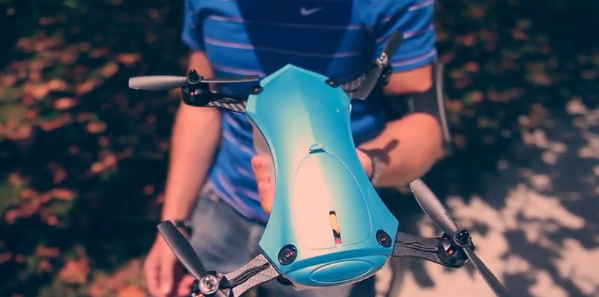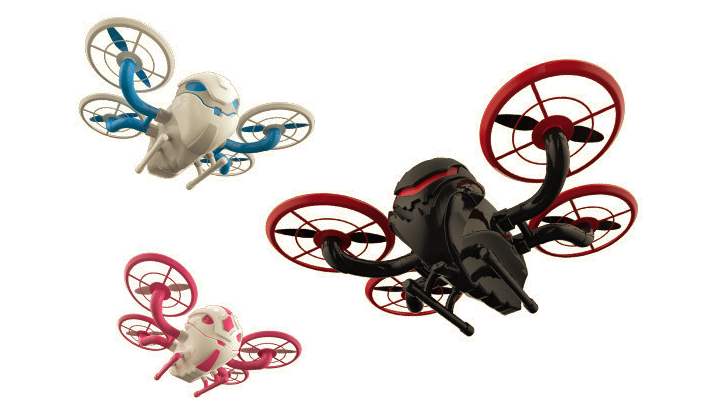The Premise. Paper airplanes are great fun, but no matter how good you are at folding them, there’s only so far they’ll go. Furthermore, it can take a great deal of effort and practice to control them with any degree of accuracy.
The Product. PowerUp 3.0 is a battery-powered, lightweight transceiver, control module, propeller, and rudder mounted on a carbon fiber frame designed to resist crash damage. The idea is to clip it to your paper plane (you provide the paper and mad folding skillz) and let it soar around as you control it with the iOS or Android app. The lithium polymer battery charges via micro USB connector, just like a phone. PowerUp 3.0 uses low-power Bluetooth wireless technology, enabling control from up to about half a football field away.
The Pitch. PowerUp 3.0’s campaign is worthy of such a fun product. The humorous pitch video explains how the PowerUp 3.0 came about as the result of a challenge to build upon Shai Goitein’s earlier experiments with propellers for paper airplanes. The 3.0 version of the paper airplane module makes things “magicaler” and Shai needs 50,000 of your “magic beans” to bring it to market. The campaign page also goes into more depth on the device’s specifications. shows some impressive raw flight footage, presents a closeup of the iPhone control app and highlights some inspired suggestions for paper airplane designs. The enticing stretch goals include an Android client at $150,000 raised, the ability to control two modules on one plane from a smartphone at $800,000 raised, the ability to have dogfights via proximity sensing at $1 million raised, and plane-mounted video capture at $2 million raised.
The Perks. While even $5 an actual paper airplane signed by the designer. At $30 and up, backers get a PowerUp 3.0 control module due in May 2014. Bonuses include an extra battery pack, extra control module, wall adapter, pilot hat, even a personalized flight jacket as the donation levels climb.
The Potential. Paper airplanes are the great toy equalizer, easy and accessible at their most basic, and this looks like a fun (and still affordable) way to extend the idea. The PowerUp 3.0 fits nicely between the paper airplane alone and model planes that need lots more talent or energy to build, or lots more money to buy. It’s also a great way to get a kid interested in model planes, but let’s be real. This is for the kid or the geek in all of us.


 Mae West never inquired as to whether a gentleman admirer had a drone in his pocket. But anyone of her time would be happy to see this multicopter with a footprint smaller than that of an iPad. The
Mae West never inquired as to whether a gentleman admirer had a drone in his pocket. But anyone of her time would be happy to see this multicopter with a footprint smaller than that of an iPad. The